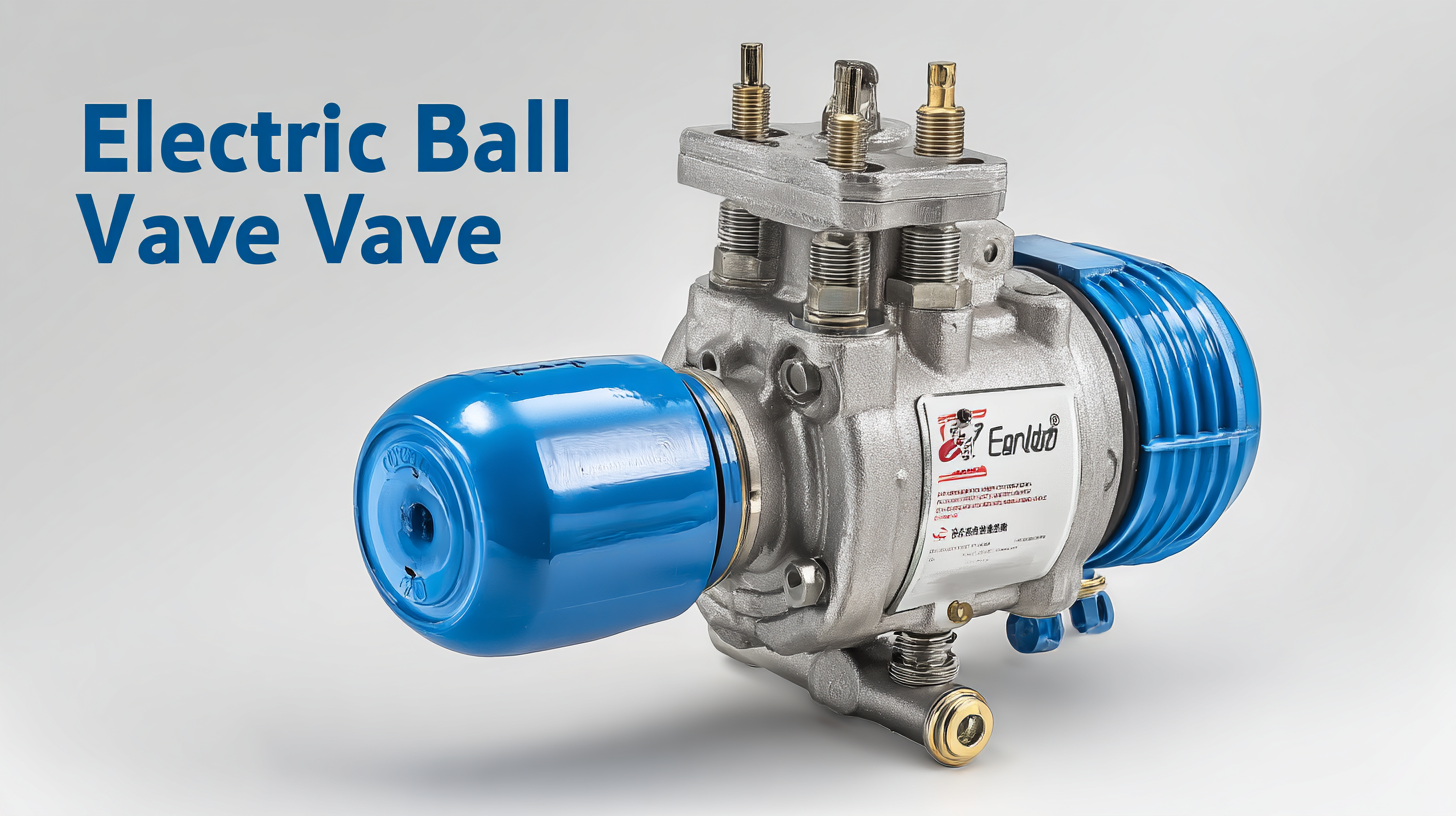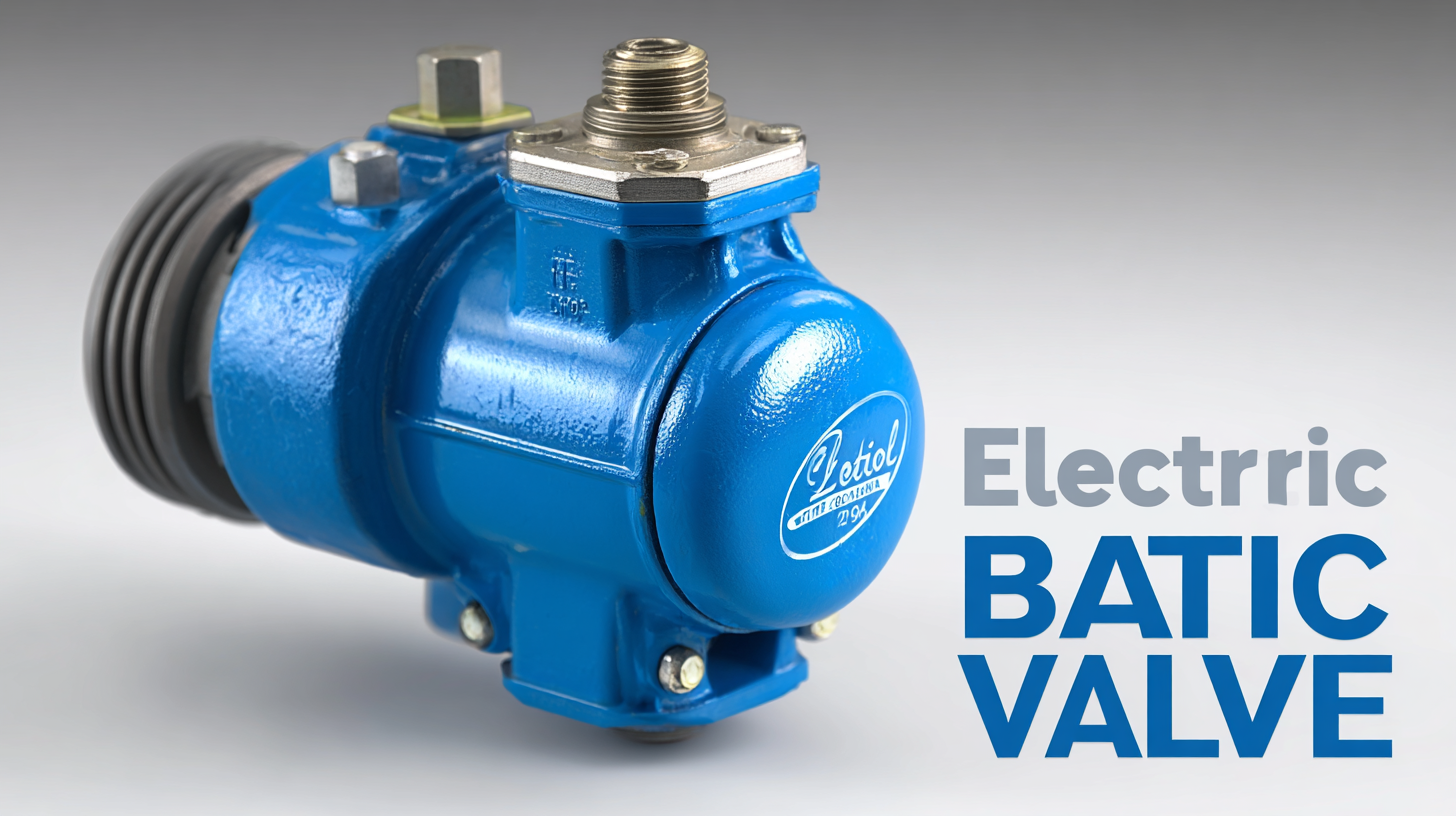
-
Home
-
Products
-
About Us
-
Application Cases
-
CLIENT & FACTORY
-
Test
-
News
-
Contact Us
Leave Your Message

In recent years, the demand for Electric Ball Valves has surged, driven by advancements in automation and the growing emphasis on efficient fluid control systems across various industries. According to a report by MarketsandMarkets, the global electric valve market is expected to reach $3.7 billion by 2024, growing at a CAGR of 6.3% between 2019 and 2024. This growth highlights the importance of selecting the right electric ball valve to ensure optimal performance and reliability in applications ranging from oil and gas to water treatment. As industries increasingly prioritize energy efficiency and system automation, making an informed choice on electric ball valves from China’s leading manufacturing plants can significantly impact operational success. This comprehensive guide will explore key considerations and features to look for when selecting the best electric ball valve tailored to your specific needs.

Electric ball valves are becoming increasingly popular in various industries due to their efficiency and versatility. Understanding the different types of electric ball valves available is crucial for making the right choice that fits your specific needs. The primary types include two-way and three-way valves, which serve distinct purposes in fluid control systems. Two-way valves are primarily used for on/off control, while three-way valves can divert or mix flow, offering more flexibility in complex piping systems.
Each type of electric ball valve comes with its unique benefits. For instance, electric actuators provide precise control over the valve operation, enabling automation in processes that require high levels of accuracy. Additionally, these valves are designed for quick response times and minimal maintenance, making them ideal for industrial applications where reliability is paramount. As the global ball valve market continues to grow, projected to reach USD 22.5 billion by 2033, selecting the right electric ball valve can enhance operational efficiency and adaptability in any application.
When selecting the best electric ball valve for your needs, several key features should be taken into account to ensure optimal performance and efficiency. First and foremost, the valve's size and flow rate capacity play a crucial role. According to a report by MarketsandMarkets, the global electric valve market is projected to reach $5.5 billion by 2026, driven by the increasing demand for automated control systems in various industries. Selecting the right size ensures proper flow management, reducing the risk of pressure loss and maintaining system integrity.

Another essential feature to consider is the actuator type, which significantly impacts response time and energy consumption. Electric actuators can provide precise control over valve operations, thus enhancing system efficiency. A study by Frost & Sullivan highlights that the adoption of intelligent electric actuators has increased by over 15% annually in industrial applications, indicating a trend toward advanced automation. It's important to evaluate the compatibility of the actuator with your control system for seamless integration. Additionally, factors such as material compatibility, temperature range, and power requirements should be considered to meet the specific demands of your application effectively.
When choosing an electric ball valve, one of the critical decisions revolves around the material. Brass, stainless steel, and plastic each offer unique advantages, making them suitable for different applications. Brass valves are known for their durability and excellent corrosion resistance, making them a popular choice for water, oil, and gas applications. Their ability to handle high pressures while maintaining a good flow rate is another reason they are favored in industrial settings.
On the other hand, stainless steel valves provide an even higher level of strength and resistance to corrosion, especially in harsh environments. They are ideal for applications involving high temperatures and pressures, as well as corrosive substances. Their longevity and reliability make them a preferred choice in industries such as food processing and pharmaceuticals, where cleanliness and durability are paramount.
Finally, plastic valves are lightweight and resistant to both corrosion and chemical damage while offering good insulation against temperature changes. They are often more cost-effective and easier to install, which makes them suitable for smaller systems or less demanding applications. However, it's essential to ensure that the chosen plastic material is compatible with the fluids used in your system, as some materials can degrade over time. Each option has its place, so understanding your specific requirements will guide you to the best choice for your electric ball valve needs.
When choosing an electric ball valve, one must prioritize energy efficiency and . Electric ball valves are engineered for precision control, which translates to reduced energy consumption in various applications. By minimizing the wasted energy typically associated with traditional valve systems, electric ball valves play a significant role in enhancing the overall efficiency of fluid control processes. Their ability to quickly reach the optimal position without excessive cycling not only conserves energy but also reduces wear on the valve components, leading to a longer lifespan.
Additionally, the cost savings associated with electric ball valves extend beyond their energy efficiency. By automating the flow control process, these valves eliminate the need for manual intervention, reducing labor costs over time. Their lower maintenance requirements compared to pneumatic or manual valves further contribute to overall operational savings. In many cases, the initial investment in electric ball valves can be quickly offset by the cumulative savings in energy and maintenance costs, making them an attractive option for businesses seeking both performance and budgetary efficiency.

To ensure the longevity of your electric ball valve, regular maintenance is essential. One of the first steps is to create a scheduled inspection routine. Regularly check for any signs of wear, corrosion, or leaks around the valve and its connections. Pay particular attention to the actuator and wiring, as these components are crucial for the operation of the valve. Cleaning the valve and its components from dust and debris will also prevent buildup that can impair function.
Another important maintenance tip is to lubricate moving parts periodically, as specified by the manufacturer. Use a lubricant that's compatible with the materials of the valve to prevent damage. Additionally, always ensure that the electrical components are properly insulated and free from moisture to avoid short circuits. Running regular diagnostic checks can help identify potential issues before they become major problems, helping extend the life of your electric ball valve significantly.